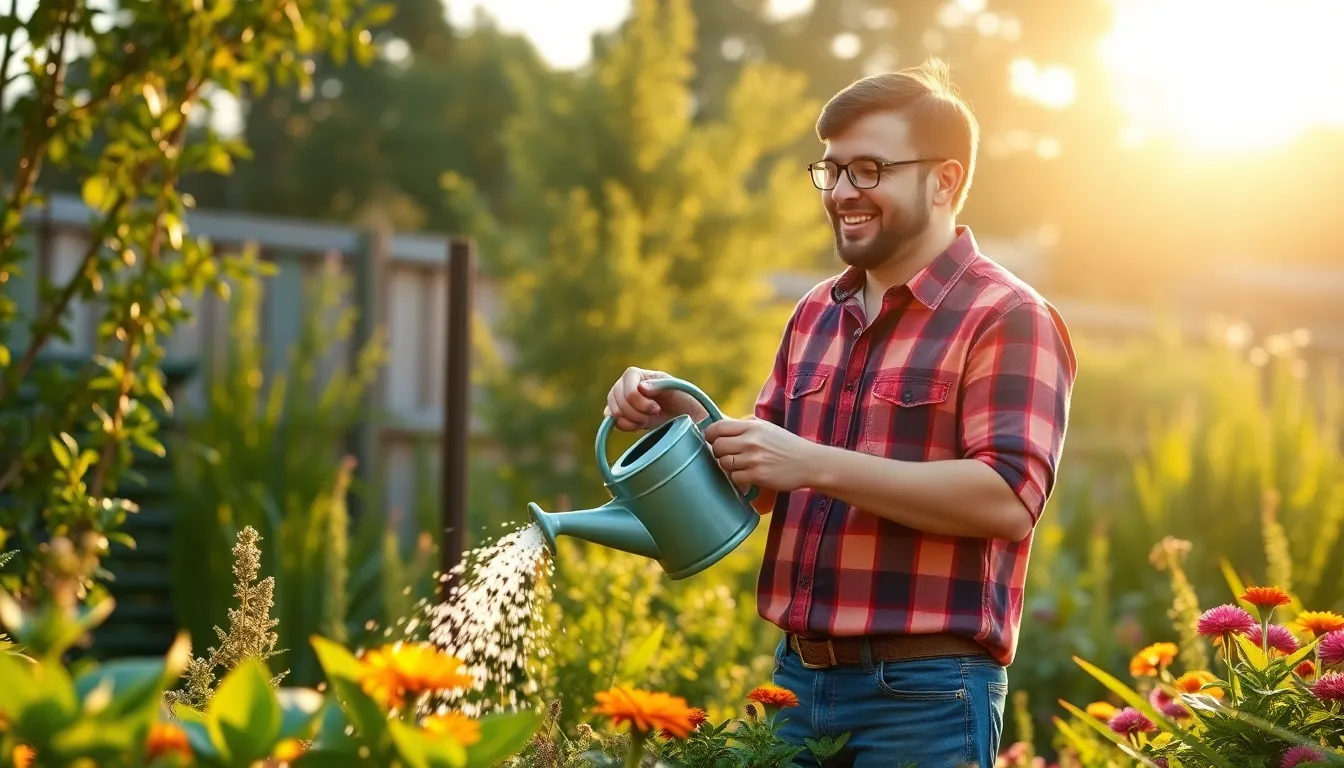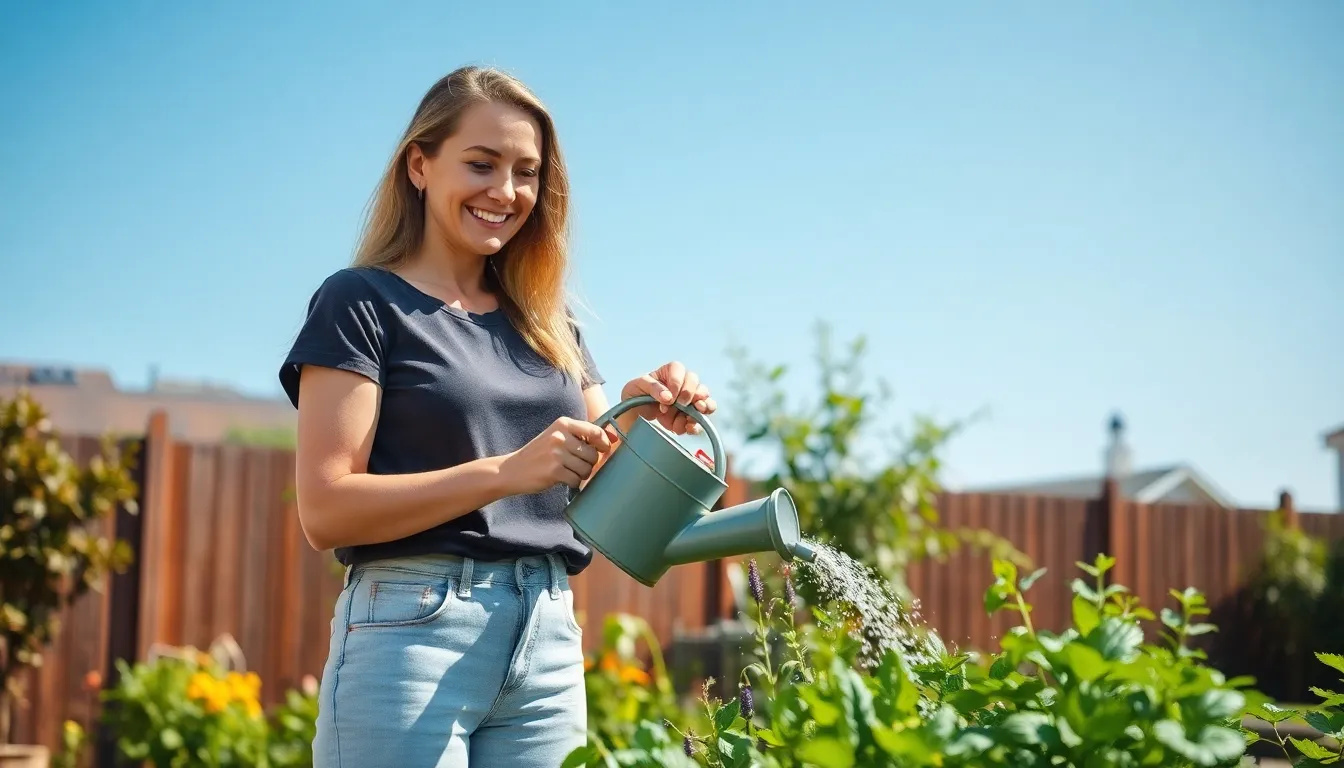Water’s essential for life, but it often gets treated like a bottomless well. With climate change and population growth, it’s time to rethink how we use this precious resource. Luckily, conserving water doesn’t have to feel like a chore; it can actually be a fun challenge!
Imagine turning your daily routine into a water-saving adventure. From clever shower hacks to creative gardening tricks, there are countless ways to make a splash without drowning in waste. Plus, saving water means saving money—who doesn’t want that? So grab your favorite drink (preferably not water) and dive into these practical tips that’ll help everyone become a water-saving superhero.
Table of Contents
ToggleImportance Of Water Conservation
Water conservation plays a crucial role in addressing the challenges posed by climate change and rising population numbers. Saving water leads to decreased energy consumption, resulting in lower greenhouse gas emissions. Each individual’s efforts contribute to the larger goal of sustainability, making their actions significant.
Reducing water usage also helps preserve crucial ecosystems that depend on freshwater sources. By conserving water, individuals can protect habitats for wildlife and maintain biodiversity. In regions facing drought, responsible water use becomes even more critical for ensuring long-term water availability for future generations.
Economically, water conservation translates into significant savings on utility bills. Lower water consumption results in reduced costs for households and businesses alike. It’s evident that every gallon saved can impact local water supply and infrastructure maintenance costs.
Creative water-saving techniques can transform daily habits into enjoyable challenges. Changing simple routines, such as turning off the tap while brushing teeth or harvesting rainwater, can make a measurable difference. Engaging the entire family in these practices fosters a culture of environmental responsibility.
Communities benefit from collective water conservation efforts as well. When many individuals adopt water-saving measures, it strengthens local resilience against water scarcity. Working together amplifies the overall impact on preserving this vital resource.
Understanding the importance of water conservation cultivates awareness and action. Every small step taken today enhances the sustainability of water resources for tomorrow. Prioritizing water-saving practices not only addresses immediate challenges but also contributes to a healthier, more sustainable planet.
Simple Water Conservation Tips

Simple actions at home can lead to significant water savings. Incorporating conservation techniques into daily routines benefits both the environment and household budgets.
Indoor Water Conservation
Reducing shower time to under five minutes conserves gallons of water daily. Fixing leaks promptly can save over 10,000 gallons annually, preventing waste. Installing low-flow showerheads and faucets minimizes water usage without sacrificing functionality. Running only full loads in dishwashers and washing machines maximizes efficiency. Turning off the tap while brushing teeth can save about 3 gallons per person each day. Collecting cold water while waiting for hot water can also provide useful water for plants.
Outdoor Water Conservation
Watering lawns and gardens during early morning or late evening hours reduces evaporation, ensuring more water reaches plant roots. Using a broom instead of a hose to clean driveways and sidewalks saves gallons of water. Mulching around plants retains moisture and reduces the need for frequent watering. Incorporating native plants in landscaping creates gardens that require less water. Installing drip irrigation systems delivers water directly to plant roots, minimizing runoff and evaporation. Harvesting rainwater in barrels provides a free and eco-friendly alternative for irrigation.
Innovative Water Conservation Techniques
Innovative techniques for water conservation can significantly reduce usage while benefiting the environment. Implementing these methods encourages efficient water management.
Rainwater Harvesting
Rainwater harvesting captures rainwater from roofs or other surfaces for reuse. This technique allows households to collect significant amounts of water for irrigation and non-potable purposes. Systems vary in complexity, from simple barrels to elaborate underground tanks. Proper filtration and treatment ensure safe usage, particularly for irrigation. Implementing rain gardens can also enhance this practice by naturally directing runoff and increasing vegetation.
Greywater Recycling
Greywater recycling involves reclaiming wastewater from sinks, showers, and laundry for repurposing. This method decreases overall water consumption by redirecting water that typically goes to waste. Installing a greywater system can be straightforward, often requiring plumbing adjustments to separate sources. Users often find that recycled greywater effectively nourishes gardens or landscapes while lowering utility bills. Interest in this approach is growing, as it contributes significantly to sustainable practices while supporting local ecosystems.
Community Efforts In Water Conservation
Community involvement plays a vital role in effective water conservation. Local organizations often spearhead initiatives that educate residents about sustainable practices. Efforts may include workshops that focus on water-saving techniques, enabling participants to learn practical skills. Residents can participate in clean-up drives that help maintain and protect nearby water sources.
Schools frequently engage students in water conservation projects, fostering a sense of responsibility from an early age. Programs can feature hands-on activities, like monitoring water usage and creating conservation gardens. These experiences cultivate awareness and inspire families to implement similar practices at home.
Municipalities may also introduce water-saving incentives. They often provide rebates for installing low-flow fixtures or rain barrels, encouraging households to invest in water-efficient technologies. Collaborations between local governments and water agencies promote efficient use of resources through informative campaigns.
Communities can support each other by sharing ideas and experiences. Peer-to-peer exchanges often reveal innovative conservation strategies that individuals can easily replicate. Neighborhood groups sometimes organize challenges to see who can reduce water usage the most, creating a friendly competition that motivates everyone.
Events like Water Day raise awareness about the importance of conservation and involve citizens in activities. Engaging storytelling and demonstrations highlight the connection between water conservation and environmental health. By uniting for a common cause, communities can enhance resilience against water scarcity while ensuring sustainable water resources for future generations.
Embracing water conservation is more than just a personal responsibility; it’s a collective journey toward a sustainable future. By adopting simple yet effective strategies, individuals can significantly reduce their water usage while enjoying the process. Engaging families and communities amplifies these efforts, fostering a culture of environmental stewardship.
As people implement these tips and participate in local initiatives, they contribute to a larger movement that protects vital ecosystems and ensures access to clean water for generations to come. Every small action counts, and together, they create a powerful impact on the planet’s health and resilience against water scarcity.



